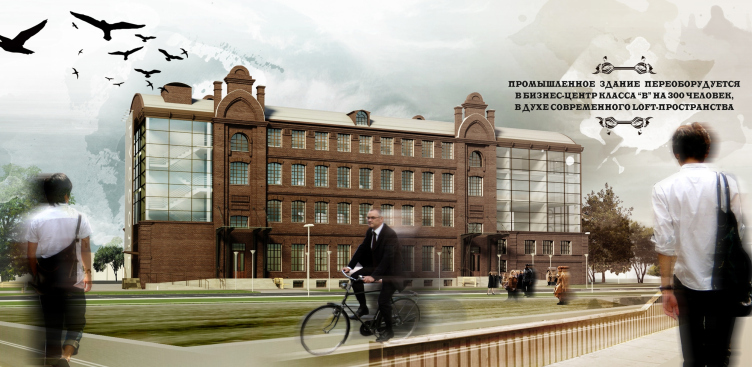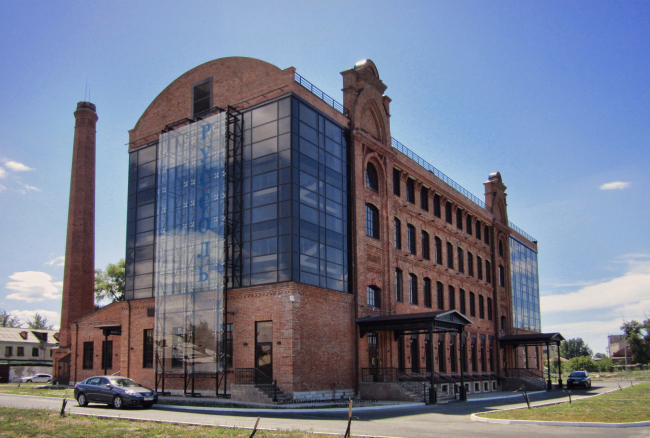
Reconstruction of the milling factory of Merchant Zaryvny into an office center © Т+Т Architects, Mealhouse Concept Design
Transforming a derelict building into an up-to-date office center is a task that is quite difficult but at the same time quite common nowadays. The only thing that is uncommon in this particular case is the very subject of reconstruction - it is the mill house of Merchant Zaryvny, built back in 1894, Orenburg's fine specimen of Russian provincial red-brick style. And it was not just "transformed". This is the city's first experiment of reconstructing a building in the "loft" style so popular nowadays. And the experiment turned out to be a success: the work of Т+Т Architects in cooperation with Mealhouse Concept Design immediately became a nominee of International (Europe & Africa) Commercial Property Awards 2010 (London), winning in the category "best architectural project (office building).
Back in the day, during the 1940's, the process of turning derelict industrial objects into residential buildings was launched in the United States. It was also the American architects of those days that developed the "inner-process" fashion and style. Originating from Manhattan, this fashion of remodeling the empty lofts of industrial premises into "studio" apartments grew into a fashion for full-scale reconstruction of industrial buildings into residential houses. However, the architectural and constructional specifics dictated their own conditions, and the idea of remodeling the factory buildings into housing projects with time transformed into the idea of reconstructing them into office premises. The next logic step was reconstructing the outdated factory buildings into business centers.
The fashion changed but the style based on the inevitable idea of implementing the authentic parts of the building into the context of the new architectural solution - remained effectively the same. The factory chimneys, stairways, and even some production units were turned into indispensable elements of the new and reformed building.
Exactly in this way, in full accordance with the rules of the genre, acted the authors of the transformation of mill house, or, to be more exact, of the red-brick building of the flour mill, once belonging to Merchant Zaryvny, built in 1894, to be rebuilt into an office center of "B" Class for "Russol" company, creating in the provincial Orenburg the canonic example of the style (the work started in 2010 and ended in 2014). On the one side - a monument of architecture, an example of reconstruction that is conservatively careful, one that inspires admiration for the keen attention to detail, almost restoration and preservation of everything that could be possibly saved: from the size and the rhythm of the basement floor windows to the brickwork of the arches on the gables of the main facade. On the other side - organizing the open space behind the gigantic glass over the annex of the former boiler house, expo area on the attic story, the inevitable meeting points for informal communication at each level and the reception desk, drawn with the "big city flash", curiously looking very much like a salt evaporation vessel. Oh, we forgot to mention that the customer is Russia's largest manufacturer of salt. The authors also came up with an unusual project of the the interior design of the offices: calm light shades, bright accents, and a color code for the floors.
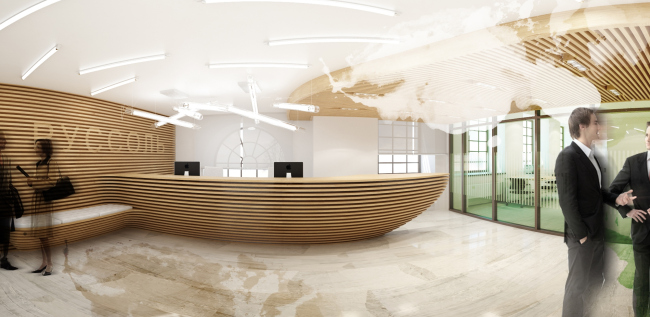
Reconstruction of the milling factory of Merchant Zaryvny into an office center © Т+Т Architects, Mealhouse Concept Design
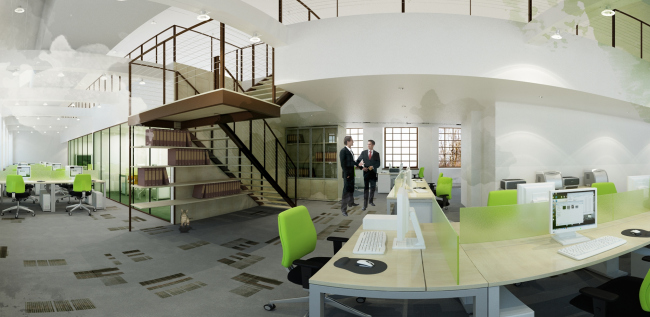
Reconstruction of the milling factory of Merchant Zaryvny into an office center © Т+Т Architects, Mealhouse Concept Design
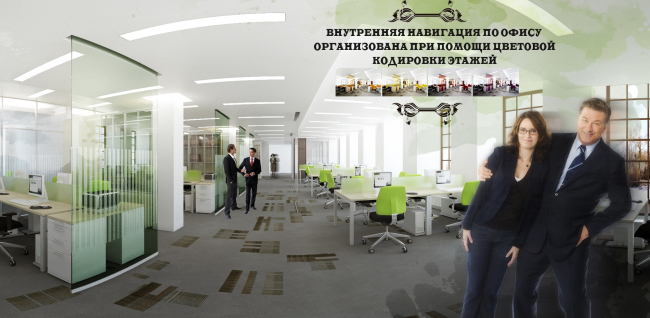
Reconstruction of the milling factory of Merchant Zaryvny into an office center © Т+Т Architects, Mealhouse Concept Design
The edifice is open for the guests visiting the showroom not on the first but on the top floor, or, rather, even above it, just as the idea to place the cafe in the basement floor is quite the traditional "loft-style" solution: the visitors simply must see all the possibilities of the remodeled space - from the opened-up basements to the ceiling supporting trusses.
A special mention should be given to the metallic parts of the facade. The presence of metallic parts - the already-mentioned staircases, hoist blocks, and other structural parts, is one of the "ground rules" of any loft. However, the traditional red-brick architecture is more often than not devoid of any metallic columns or horizontal beams or housing equipment or any other metallic arsenal that could be used to the style's benefit. And, without trying to imitate anything in the interiors with the only exception being the metallic staircase leading to the attic floor level, the architects came up with an interesting inversion, running the vertical metallic supports into the transparent side facade of the annex. They support the four-story glass wall, the only function of which is to be the "billboard" that displays the company's logo. This principle is usually employed in building the theater setups.
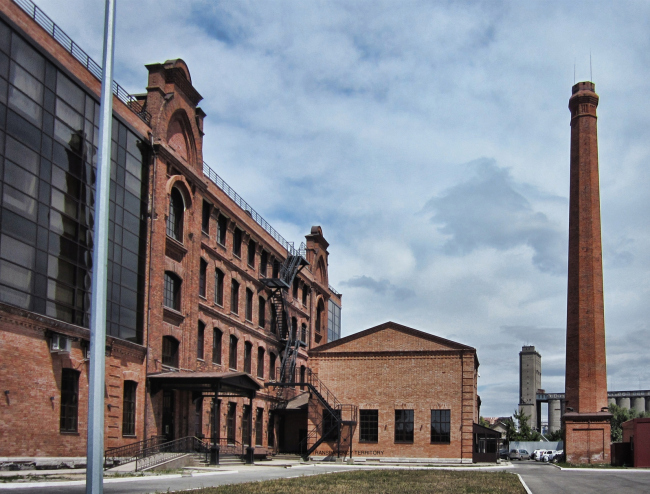
Reconstruction of the milling factory of Merchant Zaryvny into an office center © Т+Т Architects, Mealhouse Concept Design
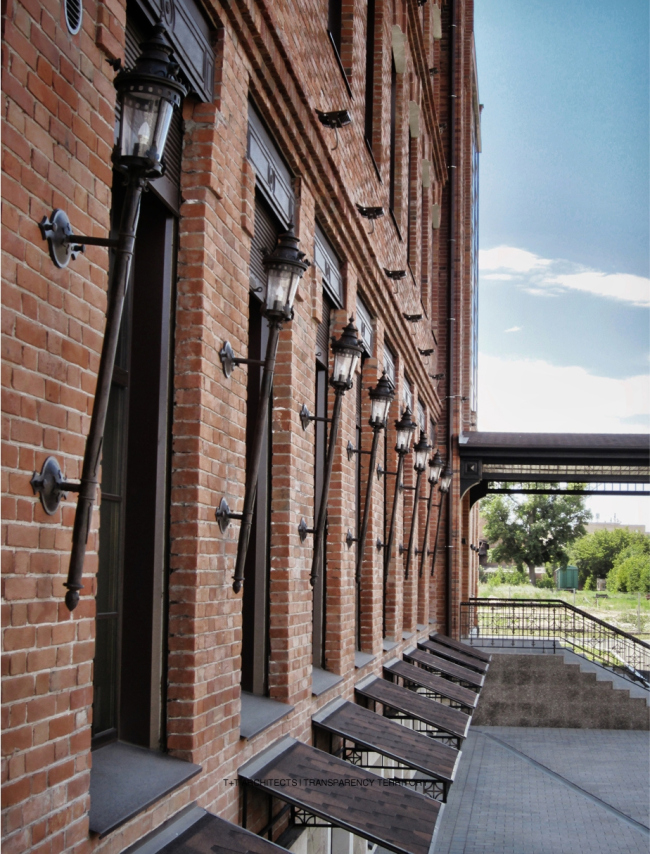
Reconstruction of the milling factory of Merchant Zaryvny into an office center © Т+Т Architects, Mealhouse Concept Design
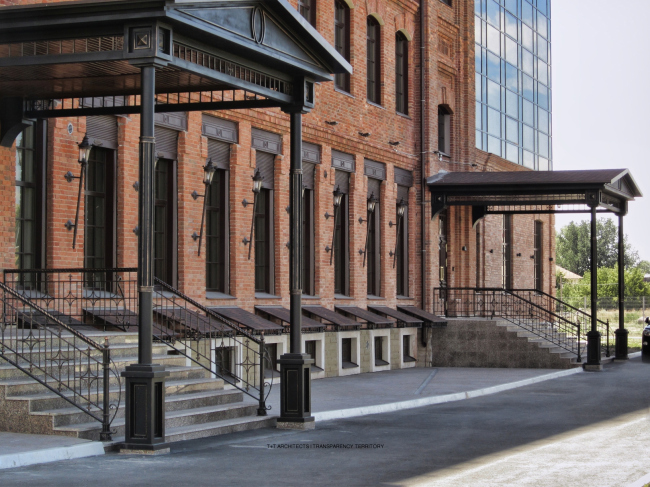
Reconstruction of the milling factory of Merchant Zaryvny into an office center © Т+Т Architects, Mealhouse Concept Design
However, while the girders of the side facade are quite obviously but a decorative element, the metal of the main facade presents serious restoration work based on almost exact replicating of the historical analogues. In this case, the metallic theme is continued by an array of wall-mounted lights and the above-window elements, behind which hide the Venetian blinds of the windows of the first floor, the staircase railings, and the marquees. The last point of this "metallic" environment is the fire staircase of the back wall - the exact copy of its New York ancestors that once formed this red-brick style.
One's attention is also attracted by the fact that, in spite of the total self-sufficiency of the building, its authors never treated it as a separate building surrounded by the dilapidated environment of the bread-making factory. Judging by the master plan, drawn in the vein of Liebenskind, the reformed mill house must become the starting point for creating here a multi-function residential complex with its own fitness center, children's education center and a system of territories united by the pedestrian structure ruining through the entire complex. This, however, is still on paper. Today, this rare-to-be-seen-in-these parts picture of "loft works" is only completed by the restored chimney of the boiler house that is meant, according to the authors, to "support the spirit of loft", and by the surviving building of the grain storage that will be with time turned into a hotel and entertainment complex, creating yet another example to be followed by his kin.
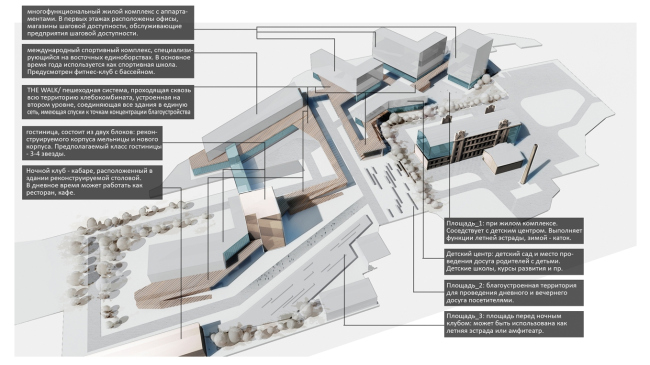
Reconstruction of the milling factory of Merchant Zaryvny into an office center © Т+Т Architects, Mealhouse Concept Design
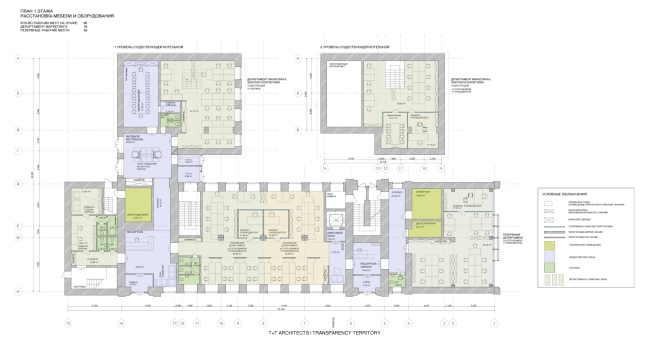
Plan of the 1st floor. Reconstruction of the milling factory of Merchant Zaryvny into an office center © Т+Т Architects, Mealhouse Concept Design
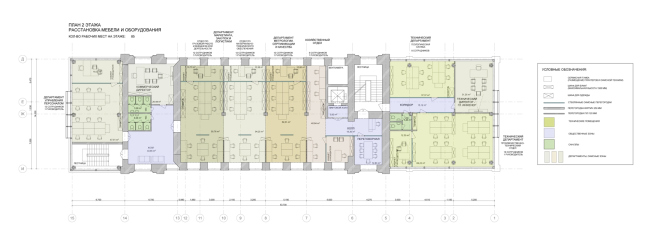
Plan of the 2nd floor. Reconstruction of the milling factory of Merchant Zaryvny into an office center © Т+Т Architects, Mealhouse Concept Design
Plan of the 2nd floor. Reconstruction of the milling factory of Merchant Zaryvny into an office center © Т+Т Architects, Mealhouse Concept Design
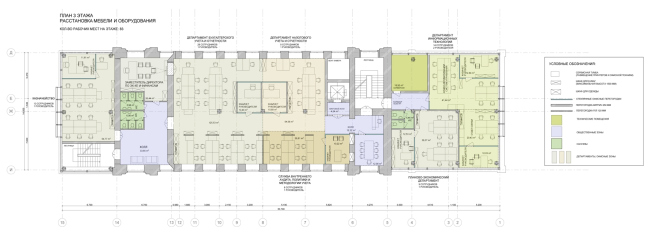
Plan of the 3rd floor. Reconstruction of the milling factory of Merchant Zaryvny into an office center © Т+Т Architects, Mealhouse Concept Design
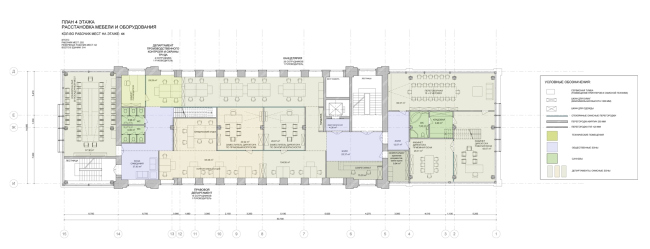
Plan of the 4th floor. Reconstruction of the milling factory of Merchant Zaryvny into an office center © Т+Т Architects, Mealhouse Concept Design
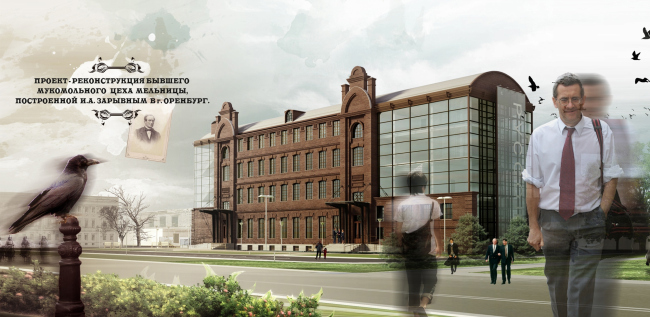
Reconstruction of the milling factory of Merchant Zaryvny into an office center © Т+Т Architects, Mealhouse Concept Design

Reconstruction of the milling factory of Merchant Zaryvny into an office center © Т+Т Architects, Mealhouse Concept Design
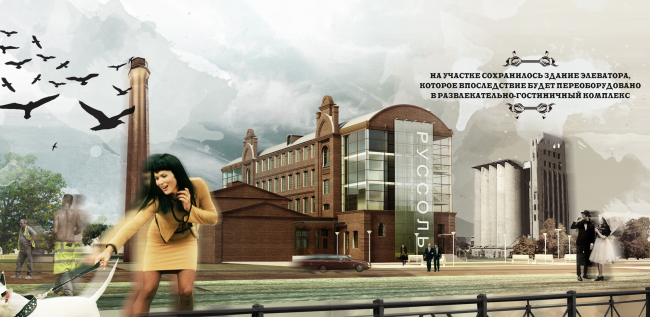
Reconstruction of the milling factory of Merchant Zaryvny into an office center © Т+Т Architects, Mealhouse Concept Design
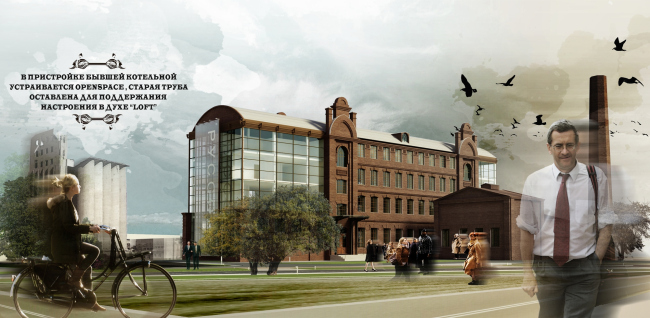
Reconstruction of the milling factory of Merchant Zaryvny into an office center © Т+Т Architects, Mealhouse Concept Design
Reconstruction of the milling factory of Merchant Zaryvny into an office center © Т+Т Architects, Mealhouse Concept Design
Reconstruction of the milling factory of Merchant Zaryvny into an office center © Т+Т Architects, Mealhouse Concept Design
Reconstruction of the milling factory of Merchant Zaryvny into an office center © Т+Т Architects, Mealhouse Concept Design
Reconstruction of the milling factory of Merchant Zaryvny into an office center © Т+Т Architects, Mealhouse Concept Design
Reconstruction of the milling factory of Merchant Zaryvny into an office center © Т+Т Architects, Mealhouse Concept Design
Reconstruction of the milling factory of Merchant Zaryvny into an office center © Т+Т Architects, Mealhouse Concept Design
Reconstruction of the milling factory of Merchant Zaryvny into an office center © Т+Т Architects, Mealhouse Concept Design
Reconstruction of the milling factory of Merchant Zaryvny into an office center © Т+Т Architects, Mealhouse Concept Design
Plan of the 1st floor. Reconstruction of the milling factory of Merchant Zaryvny into an office center © Т+Т Architects, Mealhouse Concept Design
Plan of the 2nd floor. Reconstruction of the milling factory of Merchant Zaryvny into an office center © Т+Т Architects, Mealhouse Concept Design
Plan of the 3rd floor. Reconstruction of the milling factory of Merchant Zaryvny into an office center © Т+Т Architects, Mealhouse Concept Design
Plan of the 4th floor. Reconstruction of the milling factory of Merchant Zaryvny into an office center © Т+Т Architects, Mealhouse Concept Design
Reconstruction of the milling factory of Merchant Zaryvny into an office center © Т+Т Architects, Mealhouse Concept Design
Reconstruction of the milling factory of Merchant Zaryvny into an office center © Т+Т Architects, Mealhouse Concept Design
Reconstruction of the milling factory of Merchant Zaryvny into an office center © Т+Т Architects, Mealhouse Concept Design
Reconstruction of the milling factory of Merchant Zaryvny into an office center © Т+Т Architects, Mealhouse Concept Design

















